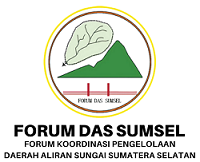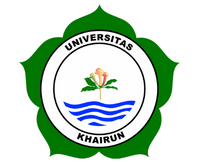Habitat Characteristics of the Honey Bee (Apis dorsata), Harvesting Methods of Forest Honey, and Characteristics of Sumbawa Forest Honey in Sumbawa Regency, Indonesia
Abstract
Sumbawa forest honey is honey produced by Apis dorsata bees. The problem faced is that Apis dorsata bees cannot be cultivated in stup and can only live in tall trees in the forest. This study aimed to determine the characteristics of Apis dorsata bees and Sumbawa forest honey. This research was conducted using a survey method, conducting field observations, interviews with several parties, and documentation. The research was conducted in Sumbawa Regency. The results of the study found that the survival of the Apis dorsata bee was highly dependent on forest sustainability. The taste and color of Sumbawa forest honey depend on the type of food or nectar consumed by Apis dorsata bees. This study concludes that Apis dorsata honey bees cannot be cultivated in stups, because this type of bee can only survive and thrive on tall trees in the forest. Sustainable harvesting techniques are carried out to sustain forest life and Apis dorsata bees. The price of Sumbawa forest honey varies based on its packaging, purity, water content, and distance traveled to collect it.
Keywords
Full Text:
PDFReferences
Asrizal M. T. 2017. “Perbandingan Pemberian Madu Hutan Dan Madu Budidaya Pada Menit Ke-30 Terhadap Glukosa darah Mahasiswa Fakultas Kedokteran Universitas Lampung Angkatan 2015”. Fakultas Kedokteran, Universita Lampung.
Badan Pusat Statistik. 2014. “Statistik Produksi Kehutanan”. Badan Pusat Statistik, Jakarta, Indonesia.
Fitrianingsih S.P., Khairat A., dan Choesrina R. 2015. “Aktivitas Antibakteri Madu Hitam Pahit Dan Madu Hitam Manis Terhadap Escherichia Coli Dan Staphylococcus Aureus”. Jurnal Farmasi Galenika. Vol. 1 No.2 hal. 32–37.
Handoko C. dan Hidayatullah M. 2017. “Kajian Migrasi Lebah Hutan Sumbawa Di Kphp Batulanteh”. Jurnal Penelitian Kehutanan Faloak. Vol. 3 No. 2 hal. 87–100. Https://Doi.Org/10.20886/Jpkf.2019.3.2.87-100
Hidayatullah M., Handoko C., Maring A.J., dan Ramdiawan. 2018. “Peran Keanekaragaman Hayati Untuk Mendukung Indonesia Sebagai Lumbung Pangan Dunia”. Seminar Nasional. Vol. 2 No. 1 hal. 8–17.
Julmansyah. 2014. “Agroforestry berbasis sumber pakan dan tanaman rumah lebah hutan: penjaga daerah aliran sungai Sumbawa”. Kiprah Agroforestry. https://blog.kiprahagroforestri.id/2014/04/agroforestry-berbasis-sumber-pakan-dan-tanaman-rumah-lebah-hutan-penjaga-daerah-aliran-sungai-sumbawa/.
Maryani R., Alviya I., Budiarifanti V., dan Salmiah M. 2013. “Melestarikan Lanskap Hutan Sumbawa Melalui Penguatan Kelompok Tani Madu Hutan”. Policy Brief. Vol. 7 No. 13 hal. 1–4.
Mensah S., Veldtman R., and Seifert T. 2017. “Potential Supply of Floral Resources to Managed Honey Bees In Natural Mistbelt Forests”. Journal of Environmental Management. Vol. 189. 160–167. Https://Doi.Org/10.1016/J.Jenvman.2016.12.033
Nadhilla N.F. 2014. “The Activity of Antibacterial Agent of Honey Against Staphylococcus Aureus”. Medical Journal of Lampung University. Vol. 3 No. 7. 94-101.
Pribadi A., dan Wiratmoko M. E. 2019. “Karakteristik Madu Lebah Hutan (Apis Dorsata Fabr.) Dari Berbagai Bioregion di Riau”. Jurnal Penelitian Hasil Hutan. Vol. 37 No. 3 hal. 185–200. Https://Doi.Org/10.20886/Jphh.2019.37.3.185-200
Ratnayani K., Dwi Adhi S.N.M.A., dan Gitadewi, Ig.A.M.A.S. 2008. “Penentuan Kadar Glukosa Dan Fruktosa Pada Madu Randu Dan Madu Kelengkeng Dengan Metode Kromatografi Cair Kinerja Tinggi”. Jurnal Kimia. Vol. 2 No.2 hal. 77–86.
Saepudin R., Fuah A.M., Sumantri C., Abdullah L., dan Hadisoesilo S. 2011. “Peningkatan Produkivitas Lebah Madu Melalui Penerapan Sistem Integrasi Dengan Kebun Kopi”. Jurnal Sain Peternakan Indonesia. Vol. 6 No. 21 hal. 29–39.
Saputri D.S., dan Putri Y.E. 2017. “Aktivitas Antioksidan Madu Hutan Di Beberapa Kecamatan di Kabupaten Sumbawa Besar”. Jurnal Tambora. Vol. 2 No.3 hal. 1–6.
Sofia, Zainal S., dan Roslinda, E. 2017. “Pengelolaan Madu Hutan Berbasis Kearifan Lokal Masyarakat Di Desa Semalah Dan Desa Melemba Kawasan Danau Sentarum Kabupaten Kapuas Hulu”. Jurnal Hutan Lestari. Vol. 5 No.2 hal. 209–216.
Wijaya P.Y., Kawiana I.G.P., Sanjaya K.O., dan Suasih N.N.R. 2022. “Penguatan Nature Branding pada Produk Madu Umkm Ybs”. Jurnal Budimas, Vol. 4 No.1 hal. 72–77.
DOI: https://doi.org/10.32502/jgsa.v3i1.5291
Refbacks
- There are currently no refbacks.
Indexed by:
Journal of Global Sustainable Agriculture
Diterbitkan oleh Fakultas Pertanian, Universitas Muhammadiyah Palembang
Contact Person:
Rika Puspita Sari, M.Si (+62 813-7490-0341)
Klinik Publikasi Pertanian
Faculty of Agriculture, Universitas Muhamamdiyah Palembang
JL. Jend. A. Yani 13 Ulu Palembang, South Sumatra, Indonesia
Tel. (+62)711-511731; Email: kppfpump@gmail.com; Website: https://jurnal.um-palembang.ac.id/JGSA

This work is licensed under a Creative Commons Attribution 4.0 International License.







1.png)

13.png)





